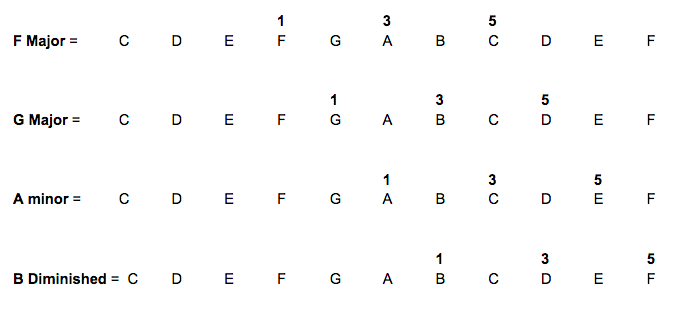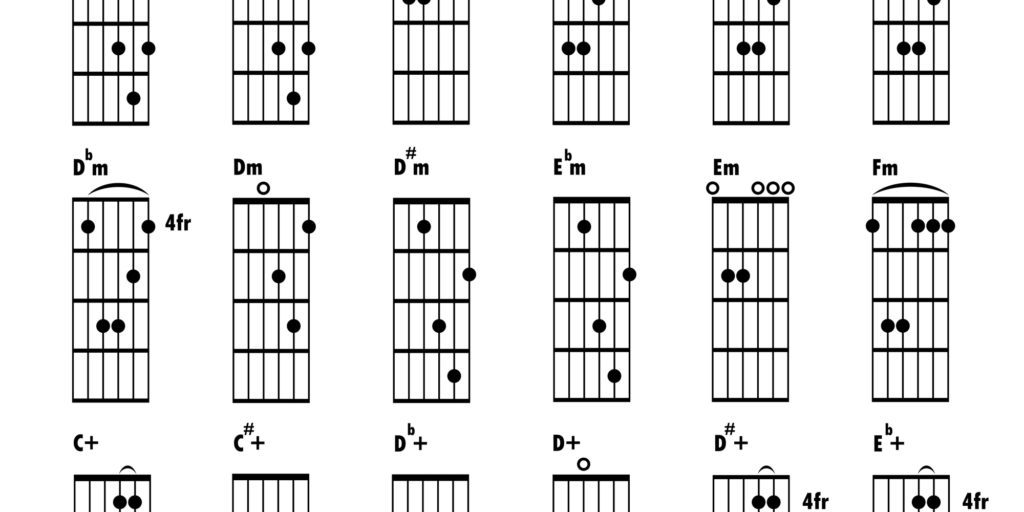
Many of us have heard of the musical term “arpeggio,” but we are aren’t aware of what it actually means and how arpeggios can help our playing.
To play all these notes--with big jumps up and down the fretboard of the guitar seems daunting, and the thought of improvising with them even more so!
The reality of this is true in a sense. To master your arpeggios all over the fretboard takes a long time, but when you begin learning, you can use them right from the start, so the process happens naturally as you become more eager to expand them.
The best thing about arpeggios is that once you understand the concept, it’s actually not too hard to start expanding your fretboard knowledge on your own.
What are arpeggios?
An arpeggio is a series of notes from a chord played in succession. Knowing this means you can now essentially play any arpeggio of any chord you know, just by playing the notes separately instead of all at once.
What is the difference between chord shapes and these arpeggios? Well the shapes we know for our chords are designed to be played as one, as a ‘chord.’ Often this means we have a random stack of the notes of the chord, for instance an E major open chord contains the notes E, B, E, G#, B and E, so we have doubled up on a few notes, but it makes for a convenient shape for our fingers.
When we learn our arpeggios, we learn them in the order that the notes appear in the scale.
Revisiting the numerical system
In the last article, we discussed how the numerical system works and its importance to the language of jazz and music in general; arpeggios are no exception--which gives us a head start.
To make it most understandable, we shall stay in the key of C, with no sharps or flats.
A three note arpeggio contains a root note, a 3rd and a 5th, just as chords do. The 3rd determines whether or not the arpeggio is minor or major. The way we determine these notes is by stacking 3rds based on a scale.
So looking at this diagram below, similar to the previous article, we can see that each degree of the scale (in this case C major) has a number. To get any 3 note arpeggio we just stack 3rds, so a C major arpeggio would have C (1) as the root, then a 3rd above that (E), and then a third above that (G) which gives us the 5th.

The result of stacking 3rds is we always get a 3rd and a 5th above the root. Depending on whether the intervals are of a minor or major 3rd will determine the quality (minor or major) and the state of the fifth (perfect, diminished, or augmented) of the arpeggio.
To find the quality of an E arpeggio in the key of C, you simply stack 3rds using the C major scale (above). We end up with E (root), G (minor 3rd), and B (perfect 5th). Due to the way the scale is constructed, the E ends up being a minor arpeggio as the note G is a minor 3rd above E. This is how arpeggios are constructed from the major scale, just the same as when constructing chords.
Depending on which root note you start on, using the major scale will give you one of the following combinations
Major 3rd + Minor 3rd = Major triad eg. C - E - G
Minor 3rd + Major 3rd = Minor triad eg. E - G - B
Minor 3rd + Minor 3rd = Diminished triad eg. B - D - F
These are the three triads that form naturally in the major scale.
You may be wondering what about what about two major 3rds?
This gives us an augmented triad, but this triad is formed from the melodic minor scale which we will discuss in future lessons. The major scale does not contain two consecutive major 3rds. The following diagram shows all the triads that are formed from the C major scale.




The shapes
The theory is important to know, but it will truly sink in once you are confident with the shapes involved.
The guitar is great in a sense that once we know the pattern of an arpeggio, it can be moved around the guitar to change position or key. The shapes we are going to look at here are the major and minor.
As we just learned, both arpeggios are made up of a root, 3rd, and 5th and the only difference is that a one has a minor 3rd and one has a major 3rd as the first interval.
The shape below shows the major and minor arpeggio played starting on the E string and then the same starting on the A string; and just like the barre chords this shape can be moved up and down the fretboard and will represent whichever note is used as the root. The lowest note in the shape is the root, followed by the 3rd, and then the 5th.

The diagram below each shape shows all the notes on the E and A string so you should be able to find any major or minor arpeggio.

Putting the arpeggios to use
Now that we have a clear grasp on these two shapes and have tried playing them from the E and A string we can use them to navigate through the progressions learned in the previous article, this is the basis of jazz improvisation.
Let’s take the ii - V - I progression in the key of C major.

For this we will use both minor and major shapes, just the same as the chords. To find a D minor arpeggio we can look for the note D on either the E or A string, there is a D conveniently located on the fifth fret of the A string if you remember from the barre chord article. The next is G major, we will find this on the third fret of the E string and a C on the third fret of the A string.
Notice I am trying to find ones that are close together this is a good habit to get into as it makes for economic improvising. From low to high the notes of the D minor arpeggio are D - F - A - D, notice I have included the octave in the shapes. This works great as in a 4/4 bar there are four beats so we can assign a note to each beat. Start by playing the arpeggios low to high, with one note per beat and back down the C arpeggio for the final bar, it should look like this,

This is one of the main ways jazz musicians improvise, following the chords using arpeggios, of course it may sound quite mechanical playing it like this at first. After you have managed to play through the arpeggios in the above way try mixing the notes around. If I put the numbers on each arpeggio, meaning the root is referred to as 1, the 3rd as 3, the 5th as 5 and the octave of the tonic as 8 then we can create patterns to practice like this:
1 - 3 - 5 - 8 (this the one we just did)
1 - 5 - 3 - 8
1 - 3 - 8 - 5
1 - 5 - 8 - 3
3 - 1 - 8 - 5
3 - 5 - 1 - 8
3 - 8 - 5 - 1
5 - 3 - 1 - 8
5 - 1 - 3 - 8
Conclusion
Of course there are many more but try these to really get the arpeggios under your fingers. Use the permutations for each arpeggio (D minor, G, and C) and see how the different combinations sound together.
Once you start feeling confident with the different permutations and have the shapes under your fingers you can start to add different rhythmic patterns to them. The best way to do this is to listen to jazz artists you like and copy there rhythmic patterns. You may likely even hear these arpeggios a lot in their improvisation. Practice navigating through the ii - V - I progression as well as the I - vi - ii - V progression and add these to your barre chord practice as they are closely related and share the same root note. Arpeggios are the basis of jazz improvisation and as we move forward, you’ll see how they develop in to something very creative.
Here is a little take away music clip to get you started:






